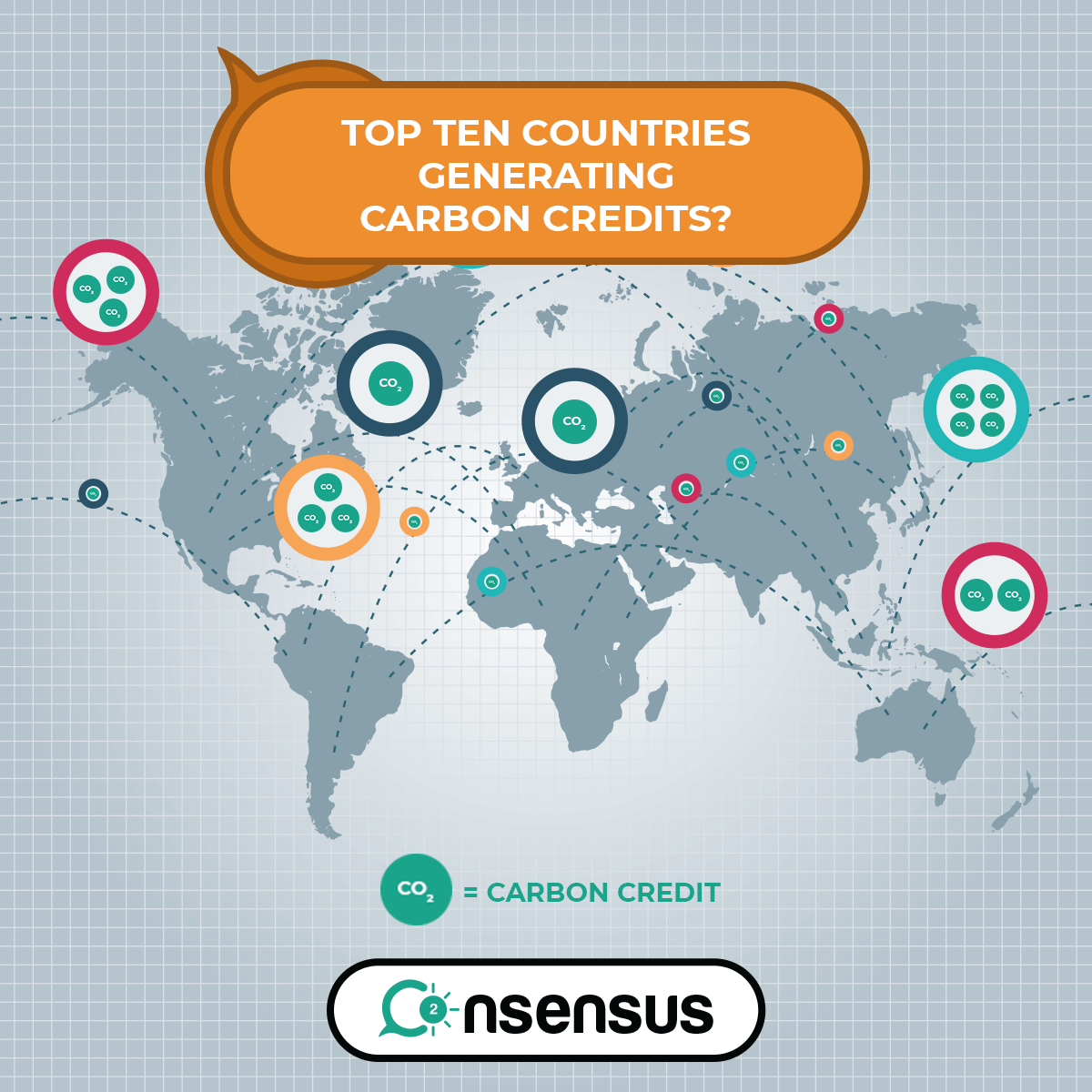Carbon credits have long gained the status of an effective instrument in the fight against climate change, greenhouse gas emissions and pollution in general.
There is no longer any doubt about their efficacy, since many countries have had carbon pricing and carbon markets running for over 15 years with encouraging results.
The Kyoto Protocol clearly outlines a number of steps to be taken in order to ensure carbon neutrality for the world. Incentivizing that process, today, there are a number of countries which offer carbon credits for sale as an investment.
A major benefit over simply having returns is you actually decrease your carbon liability in a simple manner.
However, the movement is not yet universal. There are some countries who have been doing it well for ages. On the other hand, there are many countries which have recently rolled out carbon credits schemes which are comprehensive and on a very large scale.
Keeping that in mind, we’ll introduce the top 10 countries you should consider for investing in carbon credits today.
1. New Zealand
An emissions trading scheme was launched there in 2010. Electricity generators, manufacturers and the transport sector are mandated to give to the government a carbon permit for every other tonne of greenhouse gases emitted by them. Later legislation outlawed free handouts of these permits and supported inclusion of more diverse schemes, such as agriculture based schemes.
2. Japan
The Tokyo Metropolitan Trading scheme was also launched in 2010 and covers around 1,400 of the highest emitters there. Japan’s target is to cut emissions by 25 percent from 1990 levels by 2020. The method used here is regulation, which has an emissions cap on manufacturing units and offices. These commercial units have to find innovative ways to solve their emissions issues.
3. Australia
Australia runs the domestic emissions reduction scheme, which prohibits the amount of CO2 large companies can produce. Further, these companies are banned from procuring or otherwise using CO2 offsets from the UN, but they can use a system of domestic credits. The EU will be linking it’s ETS scheme with Australia’s sometime in the future.
4. United States
The United States has a number of programs running under various states. A few noteworthy examples include the Californian scheme, where polluters will get 90 percent of permits they need to cover emissions for free right in the beginning, as well as remaining permits which will be offered at quarterly auctions. They plan to cut emissions to 1990 levels by 2020.
5. South Korea
South Korea is at the forefront of carbon credit investments, and has set up a large scheme where 500 companies, accounting for over 60 percent of the total carbon emissions annually, will be up for emissions trading. The ultimate aim for this scheme is to reduce emissions by 30 percent by 2020 taking the general trend as a baseline.
6. Mexico
Following the same standards of reducing carbon emissions from general predicted levels by 30 percent before 2020, Mexico has unveiled a new, voluntary carbon dioxide trading scheme. Here, the creation of a carbon market is not mandated. A commission has authority to implement a cap, then trade system to regulate carbon emissions.
7. India
India currently stands at 7 percent of the world carbon trading market. The scheme rolled out in 2014. The scheme covers eight sectors which have 54 percent of the total industrial energy consumption of the country. This comes after a pledge for reducing emissions by 20 percent from 2005 levels by 2020.
8. China
Seven cities of China, namely Beijing, Chongqing, Guangdong, Hunan, Shanghai, Shenzhen and Tianjin are running carbon trading schemes successfully, counting for a large proportion of the global carbon market. They are targeting a local decline in carbon emissions by up to 45 percent below 2005 levels before 2020. These cover most energy-intensive industries in the country.
9. Thailand
Thailand’s carbon market is a relatively new one, but due to a large number of manufacturing units, it is readily picking up pace. The carbon market is run under the guise of Thailand Carbon Offsetting Plan – TCOP, started in 2013. Frameworks to set up a national carbon price are already on the way, and a pilot market is already running well.
10. Vietnam
Like Thailand, Vietnam’s market has also seen steady efforts being put into ensuring a stable carbon credits system for the future. It recently launched over a million carbon credits just from the household biogas plants. It is working to ensure that the 31st largest carbon producer in the world moves forward towards being a carbon neutral economy.
Emerging Carbon Credit Economies
Many other countries are slowly starting to emerge to the forefront of carbon trading, such as Taiwan due to its flourishing electronics industry, as well as European countries which have wonderful programs running in parallel to their efforts in ensuring an environmentally safe future for all.
These European economies include but are not limited to Scandinavian countries like Iceland and Norway. These countries bring the power of the latest in renewable energy technology to the carbon market. Further, multiple countries are coming together to form conglomerates that are offsetting their carbon liability. An example is the WCI.
Final Words
With this, we conclude our rundown of the 10 best countries as far as carbon credits are concerned. Some of these countries are also the largest offenders as far as carbon dioxide emissions are concerned, but the fact remains – the business of carbon credits is likely to keep on flourishing as the world moves towards a sustainable future.
We strongly urge you to look into countries which have well framed carbon policies to make sure you invest in the best possible manner. Remember, your investment is an effort towards ensuring a brighter, cleaner and safer future for our children.
